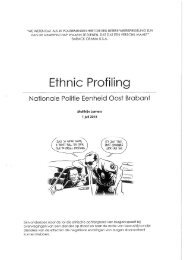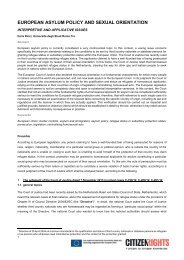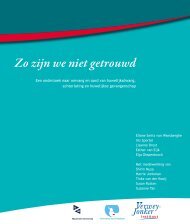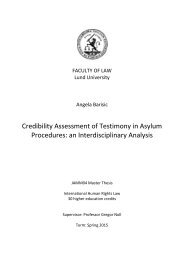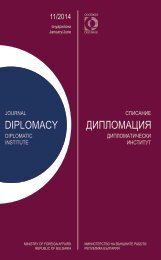AEMI
AEMI-2016-web
AEMI-2016-web
You also want an ePaper? Increase the reach of your titles
YUMPU automatically turns print PDFs into web optimized ePapers that Google loves.
SARAH MARIJNEN AND JEROEN DOOMERNIK<br />
135<br />
lines the requirements for ICAs. Authorities<br />
in the sending states are charged<br />
with the responsibility of determining<br />
whether a child is adoptable. The receiving<br />
states are responsible for determining<br />
whether prospective parents are<br />
suitable to adopt. The mechanisms for<br />
regulating ICA are outlined in the third<br />
and fourth chapter of the Convention.<br />
Each contracting state has to create a<br />
central authority that is required to undertake<br />
all measures required to prevent<br />
improper financial gains. These central<br />
authorities are charged with exchanging<br />
information relating to the prospective<br />
parents and the child and facilitating the<br />
ICA process. The central authorities in<br />
sending and receiving countries must<br />
both agree before the adoption can proceed.<br />
They too are required to ensure<br />
the safe transfer of the child.<br />
This international legal framework<br />
was an attempt to restrict the profits<br />
and market forces in the ICA system. In<br />
spite of this, the large discrepancy between<br />
supply and demand has kept into<br />
effect powerful economic mechanisms,<br />
where children are being treated as commodities,<br />
at least by some actors. ICA is<br />
thus driven by its customers and money,<br />
and the system has become infected<br />
with a substantial degree of “child laundering”.<br />
Child laundering occurs ‘when<br />
children are taken illegally from birth<br />
families through child buying or kidnapping,<br />
and then “laundered” through<br />
the adoption system as ”orphans” and<br />
then ”adoptees” (Smolin, 2004, 112).<br />
Therefore, one could wonder whether<br />
adoption agencies are in search of a loving<br />
family for a child or of children for<br />
homes in developed countries. This perversion<br />
of the adoption system is countered<br />
by the Optional Protocol which<br />
explicitly criminalizes such practices.<br />
Yet, as we will demonstrate, it is questionable<br />
whether this presents a sufficiently<br />
effective response to the policy<br />
issues posed by international adoption<br />
processes which are the substance and<br />
remainder of this article. First we will<br />
discuss the nature of international adoption<br />
and the ways in which it has taken<br />
on the features of a market with legal<br />
and illegal elements. With that knowledge<br />
in mind we then look at the stakeholders<br />
in this market discussing what<br />
the precise nature of their interests is.<br />
The Structural Factors Under lying<br />
the Market for ICA<br />
The main reasons that have been identified<br />
for the increasing demand for children<br />
in developed countries are social<br />
and demographic changes, such as the<br />
legalization of abortion, the increased<br />
use of contraceptives, higher workforce<br />
participation of women and highly<br />
regulated domestic adoption processes<br />
(Graff, 2008). However, the increased<br />
demand for ICA is mainly the result of<br />
the significant rise in infertility rates over<br />
the last decades. More than six million<br />
Americans in the reproductive-age population<br />
suffer from infertility. Between<br />
1968 and 1980 the number of persons<br />
who sought treatment for infertility<br />
doubled (Bartner, 2000, 406). Along<br />
with the increased number of infertile<br />
individuals came a tremendous influx<br />
of money and the creation of the ‘family<br />
building’ industry. As Bartner further<br />
explains: ‘infertile couples seem driven<br />
to incredible lengths to bring children<br />
into their lives and to create the traditional,<br />
American, nuclear family. Cou-




